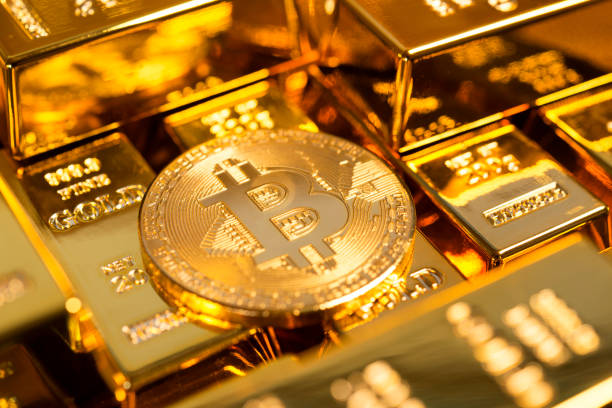In recent times, the financial world has been abuzz with comparisons between traditional and digital assets. As investors seek alternatives to hedge against economic uncertainties, both gold and Bitcoin have emerged as popular choices. This shift in investment sentiment has led to intriguing parallels between these two distinct yet increasingly interconnected worlds. This article explores why Bitcoin, often dubbed ‘digital gold,’ is drawing attention similar to that of the age-old precious metal. From potential reserve asset status to market value predictions, Bitcoin’s journey is captivating policymakers and investors alike.
Bitcoin and Gold: Analyzing the Emerging Parallels in the Investment World
The Growing Comparison Between Bitcoin and Gold
Financial analysts at Deutsche Bank have recently highlighted the growing similarities between gold and Bitcoin as both assets demonstrate impressive performance this year. These analysts suggest that Bitcoin is embodying a role comparable to gold in the 20th century, serving as a potential reserve asset amid increasing economic uncertainties. With gold reaching unprecedented highs and Bitcoin showing record-breaking performance, discussions among policymakers are expanding to consider Bitcoin alongside gold as a reserve asset. It’s projected that central banks might start adding Bitcoin to their reserves, complementing gold by 2030, further cementing Bitcoin’s status as ‘digital gold.’
The Debasement Trade: A Catalyst for Bitcoin’s Rise
As economic uncertainties loom with situations like the U.S. government shutdown, the ‘debasement trade’—protection against currency devaluation—has prompted investors to seek safer alternatives. Bitcoin, tracking alongside gold’s performance, recently achieved a historic peak surpassing $125,000. Crypto analyst Holger Zschaepitz points out that Bitcoin tends to follow gold’s lead, often with significant momentum during macroeconomic shifts. This trend could potentially drive Bitcoin’s value to $160,000 if the current pattern continues. According to JPMorgan’s analysis, Bitcoin remains undervalued compared to gold, suggesting a potential rally to $165,000 by year-end.
Future Projections: Bitcoin’s Potential Valuation
Matthew Sigel, Head of Digital Assets Research at VanEck, forecasts that Bitcoin could reach half the market capitalization of gold after the next halving event in 2028. With gold’s current market cap at approximately $27 trillion and Bitcoin’s at $2.2 trillion, this projection places Bitcoin’s potential value at a staggering $644,000. Sigel notes that half of gold’s value is derived from its role as a store of value, a role Bitcoin is increasingly playing, especially among younger investors. Similarly, SkyBridge CEO Anthony Scaramucci anticipates a significant shift in asset allocation towards Bitcoin as younger generations ascend to leadership positions.
At the moment, Bitcoin’s price hovers around $112,500, showing fluctuations in the short term but maintaining a bullish long-term outlook.
What makes Bitcoin comparable to gold?
Bitcoin is often referred to as ‘digital gold’ due to its limited supply and perceived value as a hedge against economic instability, much like gold. While gold has long been a traditional store of value, Bitcoin provides a digital alternative, appealing to tech-savvy investors and younger demographics.
How might central banks include Bitcoin in their reserves?
Like gold, Bitcoin’s finite supply and decentralized nature make it an attractive asset for diversification in central bank reserves. As acceptance of cryptocurrencies grows, central banks might start incorporating Bitcoin to hedge against traditional currency risks, subject to regulatory advancements and market stability.
Is investing in Bitcoin riskier than gold?
Bitcoin, while volatile due to its nascent market and regulatory developments, offers significant growth potential. However, it carries higher risk compared to gold, which is often perceived as a more stable and reliable store of value. Investors should assess their risk tolerance and investment goals before considering Bitcoin.
Bitcoin’s journey continues to captivate the financial world, with its parallels to gold sparking interest among both institutional and individual investors. As the landscape evolves, understanding these dynamics will be crucial for making informed investment decisions.

